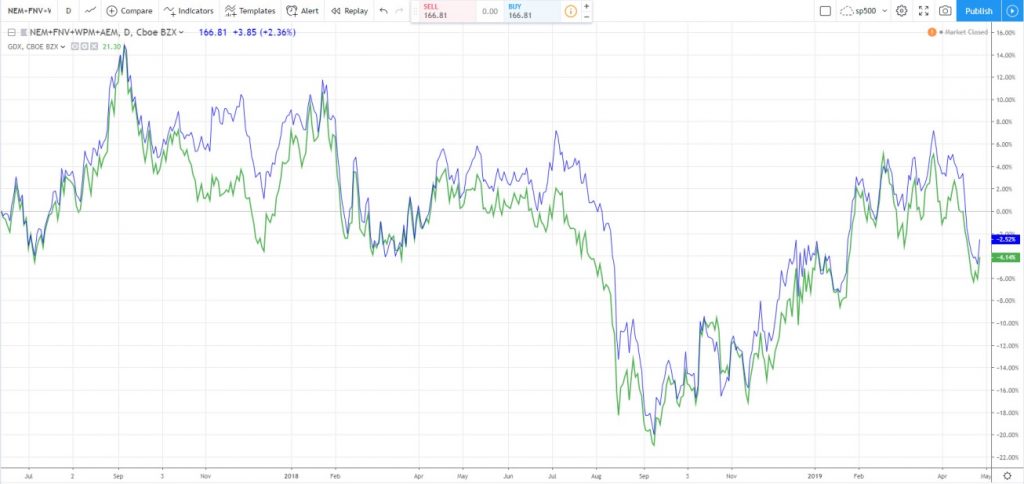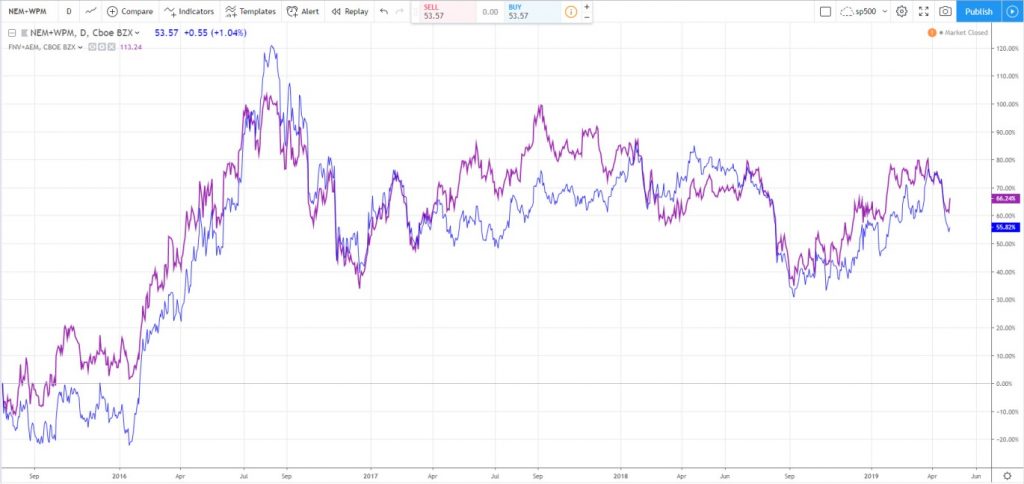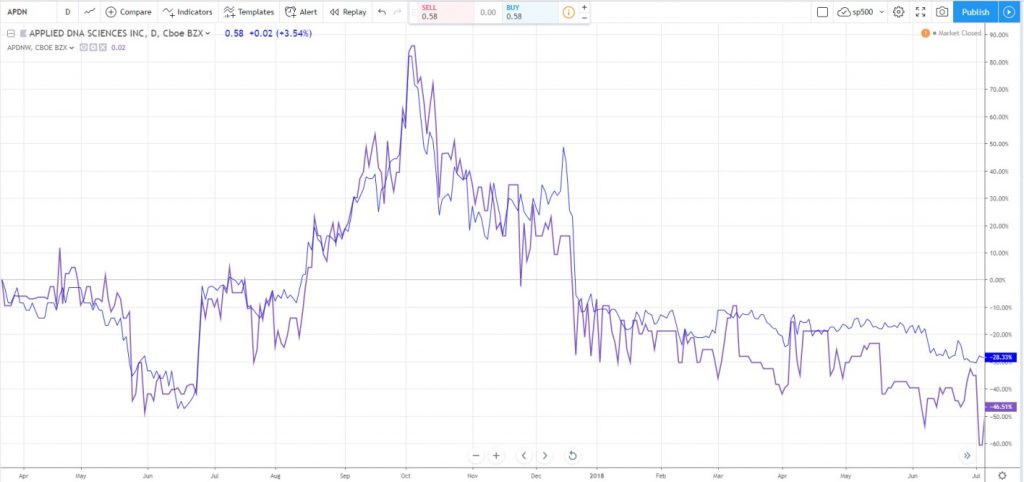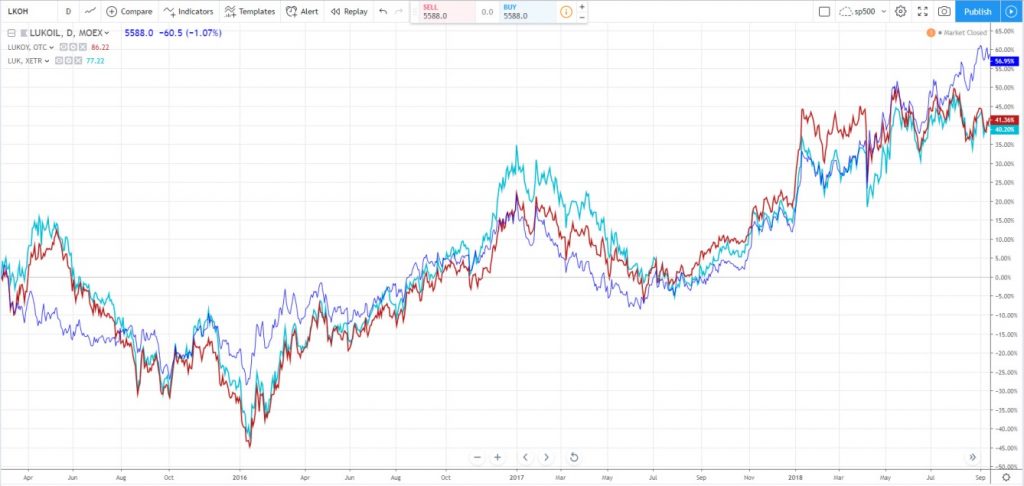
First of all, I want to explain why I am dealing with the American stock market (NYSE, NASDAQ) – the largest number of trading instruments (and therefore variations) are traded on this market, there are the largest trading volumes on this market (which means you can actually trade any amount of money).
I explained the basics of arbitrage and pair trading in previous articles, and now I want to tell you how these strategies can be used effectively on the American stock market. Let me just remind you that arbitrage is the safest method of trading.
I found four interesting opportunities for arbitrage on the stock market NYSE, NASDAQ. The first is ETF trading against the shares included in this fund.
As an example, ETF (Exchange Traded Fund) of gold mining companies GDX against shares included in this fund – NEM, FNV, WPM, AEM. Many companies belong to the fund, but we choose the largest in terms of the number in the portfolio – NEM 8.32%, FNV 6.1%, WPM 5.35%, AEM 4.95%, so we trade the portfolio against its 25% (do not forget that all active assets are one industry, and there is always a high correlation). Here is an example of such a comparison graph:

You can see a very good correlation (and even cointegration) on the figure, but this is a very simple approach, in fact, it is necessary to take into account weight coefficients. Weight coefficients should include both the consideration of the percentage amount in GDX and the ratio of stock prices.
There are many ETFs on the American stock market, so creating a wide portfolio is not a problem. The second type is a comparison of stock basket from one sector to another basket from the same sector.
Using the example of the same gold mining sector, we can compare NEM+WPM against FNV+AEM

Here, good opportunities are also visible, even in a very generalized version. To make it more accurate, it is necessary to take into account weight coefficients that include share price, and also, it is recommended to increase the number of shares in the portfolio – the more, the better the diversification is. I will say right away that the option of one share against one share will lead to losses over time.
You can build huge number of such portfolios (due to the large number of shares on NYSE, NASDAQ).The third option is to compare the stock with share purchase warrants.
As an example, we can consider trading APDN share against ADPNW warrant. If somebody does not know, a warrant is a security based on a share, the right to buy a share at a specified price – hence the correlation.

There are many share purchase warrants listed on the stock exchanges, so you can make a wide series of such transactions.
And the last variation is the trading of shares (or ADR per share), but in different markets.
Here is an example of Lukoil shares on Moscow Stock Exchange, compared with quotations on OTC (USA) and on XETRA (Germany).

As you can see, there are many arbitrage opportunities, but again, it is a simple and not accurate comparison. It should be understood that in the Russian Federation, Lukoil shares are quoted in rubles, in the USA – in dollars, and in Germany – in euros, i.e. it is necessary to bring everything to a uniform exchange rate.
You can find more options for arbitration, but those that I have provided are enough to turn around dozens millions of dollars.
It is important to note that each of these strategies requires additional research, which cannot be carried out simply by superimposing graphs, since, for example, weight coefficients need to be recalculated every day, etc.
Whom this strategy is suitable for? This strategy requires capital, i.e. it is ideal for funds and large investors, but in fact, it can also be launched for medium-sized investors with a deposit of $ 10,000 or more.